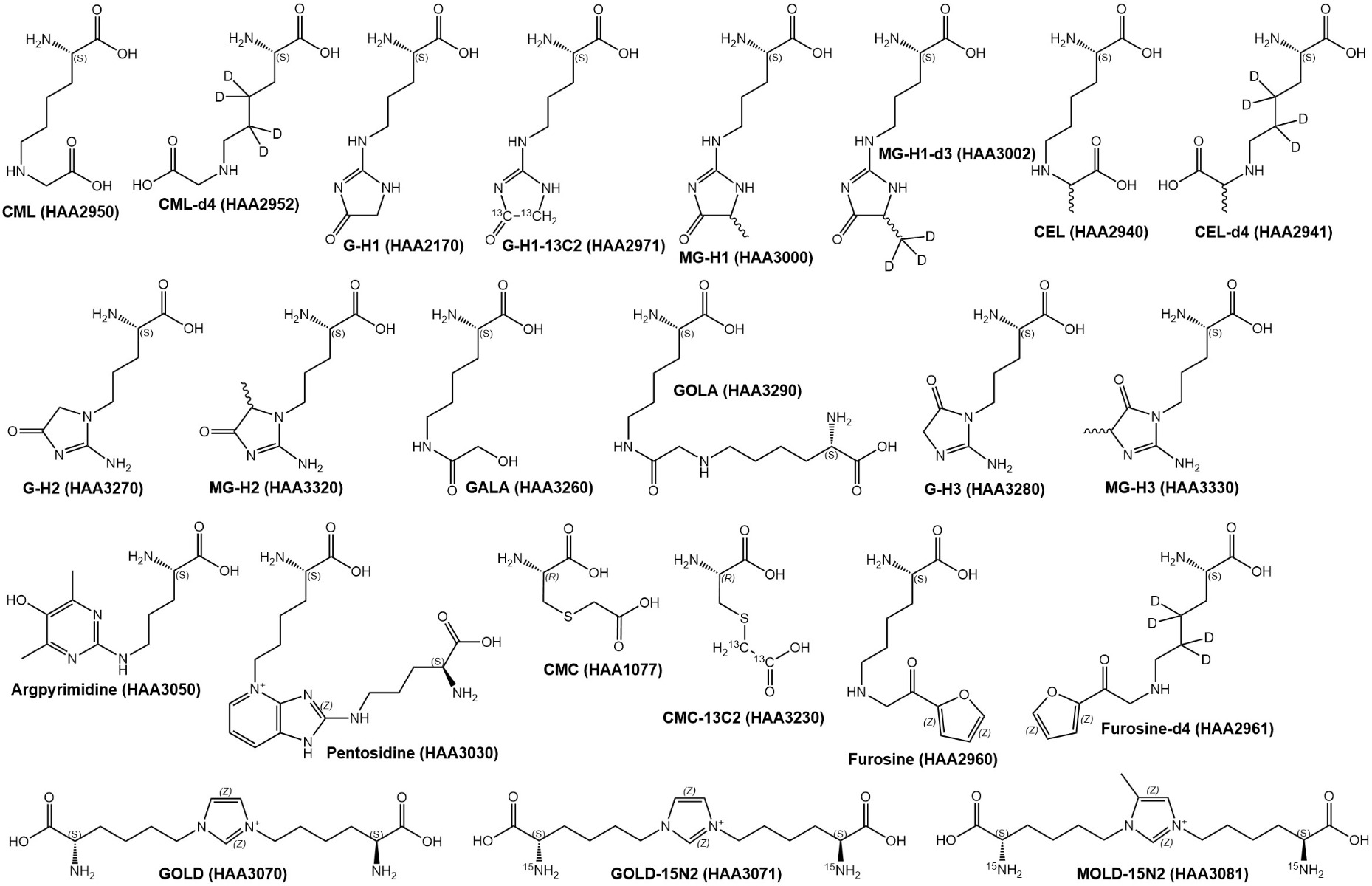Welcome to Iris Biotech
For better service please confirm your country and language we detected.

For better service please confirm your country and language we detected.

Thank you very much for your interest in our products. All prices listed on our website are ex-works, Germany, and may attract customs duties when imported.
You may/will be contacted by the shipping company for additional documentation that may be required by the US Customs for clearance.
We offer you the convenience of buying through a local partner, Peptide Solutions LLC who can import the shipment as well as prepay the customs duties and brokerage on your behalf and provide the convenience of a domestic sale.
Continue to Iris Biotech GmbHSend request to US distributorPublished on 31/07/2020

The Maillard Reaction is a nonenzymatic glycation reaction that commonly occurs in food products and proceeds via three stages to afford Maillard Reaction Products (MRPs). In a first step, the reducing end of a carbohydrate undergoes a condensation reaction with an amino group from an amino acid, peptide or protein to afford a Schiff base that rearranges to the Amadori product (Fig. 1).

Fig. 1: Formation of Amadori Products.
The second stage involves the formation of a variety of reactive dicarbonyl compounds such as glyoxal, MGO, and deoxyglucosone by degradation of the Amadori product. In the third and final stage of the Maillard reaction, Advanced Glycation End Products (AGEs, Fig.2) are formed, as well as the typical brown polymers termed melanoidins resulting from the condensation and polymerization of proteins.
An increased presence of MRPs in food, for example in dairy products, may negatively influence the quality of the product by causing undesired flavors and coloring, as well as by lowering its nutritional value. In order to analyze the extent to which Maillard Reaction Products are present in food after different kinds of treatment (e.g. heat), appropriate analytical methods are of crucial importance. Poojary et al. have developed a validated UHPLC-MS/MS method for the simultaneous identification and quantification of 15 different Advanced Glycation End Products, as well as furosine and various other related compounds (protein-derived crosslinks and certain amino acids). This novel method is highly sensitive (LOD and LOQ values in the ng/mL range), and is applicable for milk samples, for different varieties of meat, as well as for bovine plasma and perfusion liquid. All 25 AGE standards and internal standards used in this publication were purchased from Iris Biotech.

Fig. 2: AGE standards and internal standards from Iris Biotech used in Poojary et al., J Chromatogr A 2020.
➔ Visit our Website to explore our whole range of Maillard Reaction Products!
➔ Or request our updated Flyer on “Maillard Reaction Products - Markers and Indicators in Food, Pharma and Cosmetic Industry”.
➔ Do you need a different MRP? Just contact our Custom Synthesis Service.
References: